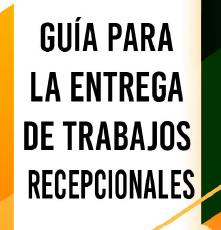Mostrar el registro sencillo del ítem
Teaching intercultural awareness in the English as a Foreign Language classroom: a case study using critical reading.
| dc.contributor.author | Perales-Escudero, Moises Damian | |
| dc.date.accessioned | 2024-03-08T02:51:57Z | |
| dc.date.available | 2024-03-08T02:51:57Z | |
| dc.date.issued | 2013-09-01 | |
| dc.identifier.uri | http://hdl.handle.net/20.500.12249/4057 | |
| dc.description.abstract | Este artículo informa sobre un estudio de intervención educativa que utilizó herramientas lingüísticas y Aproximaciones retóricas a la lectura crítica, con el fin de enseñar conciencia intercultural. La intervención se implementó con un grupo de universitarios mexicanos. estudiantes que aprenden inglés como lengua extranjera. El estudio se centra en los cambios. entre las comprensiones articuladas de los participantes antes y después de la intervención el contexto cultural objetivo, concretamente los EE.UU. Los datos fueron codificados y analizados. utilizando una perspectiva de la teoría de la complejidad y un análisis cualitativo dirigido. Los resultados indican que llamar la atención de los estudiantes sobre la situación cultural del uso del lenguaje puede aumentar su conciencia de las múltiples posiciones ideológicas existente en un contexto cultural. Con base en estos resultados, el artículo sostiene que El campo de la educación intercultural necesita dar un giro lingüístico para avanzar sus objetivos. | |
| dc.description.provenance | Submitted by Moisés Damián Perales Escudero (mdperales@uqroo.edu.mx) on 2024-03-06T12:34:31Z No. of bitstreams: 1 intercultural_ed_paper.pdf: 157152 bytes, checksum: 882dbd13cce2b8d0d1d1a33a7a2d8611 (MD5) | |
| dc.description.provenance | Approved for entry into archive by Yeni Martin Cahum (yenimartin@uqroo.edu.mx) on 2024-03-08T02:51:56Z (GMT) No. of bitstreams: 1 intercultural_ed_paper.pdf: 157152 bytes, checksum: 882dbd13cce2b8d0d1d1a33a7a2d8611 (MD5) | |
| dc.description.provenance | Made available in DSpace on 2024-03-08T02:51:57Z (GMT). No. of bitstreams: 1 intercultural_ed_paper.pdf: 157152 bytes, checksum: 882dbd13cce2b8d0d1d1a33a7a2d8611 (MD5) Previous issue date: 2013-09-01 | |
| dc.format | ||
| dc.language.iso | eng | |
| dc.publisher | Taylor & Francis | |
| dc.relation.ispartof | Intercultural Education | |
| dc.relation.uri | http://dx.doi.org/10.1080/14675986.2013.793037 | |
| dc.rights.uri | http://creativecommons.org/licenses/by-nc-nd/4.0 | |
| dc.subject | Lingüística aplicada | |
| dc.subject | Lectura (Educación superior) | |
| dc.subject | Educación multicultural | |
| dc.subject.classification | HUMANIDADES Y CIENCIAS DE LA CONDUCTA::LINGÜÍSTICA::LINGÜÍSTICA APLICADA | |
| dc.title | Teaching intercultural awareness in the English as a Foreign Language classroom: a case study using critical reading. | |
| dc.type | Artículo | |
| dc.type.conacyt | article | |
| dc.rights.acces | embargoedAccess | |
| dc.identificator | 4||57||5701 | |
| dc.description.other | This paper reports on an educational intervention study that used linguistic and rhetorical approaches to critical reading, in order to teach intercultural awareness. The intervention was implemented with a group of Mexican college students learning English as a foreign language. The study focuses on changes between participants’ pre- and post-intervention articulated understandings of the targeted cultural context, namely the USA. The data was coded and analyzed using a complexity theory perspective and directed qualitative analysis. The results indicate that drawing students’ attention to the cultural situatedness of language use can increase their awareness of the multiple ideological positions existing in a cultural context. Based on these results, the paper argues that the field of intercultural education needs to take a linguistic turn in order to further its goals. | |
| dc.identifier.doi | http://dx.doi.org/10.1080/14675986.2013.793037 | |
| dc.number.revista | Vol. 24, No.3 |
Ficheros en el ítem
| Ficheros | Tamaño | Formato | Ver |
|---|---|---|---|
|
No hay ficheros asociados a este ítem. |
|||
Este ítem aparece en la(s) siguiente(s) colección(ones)
-
Artículos [181]





